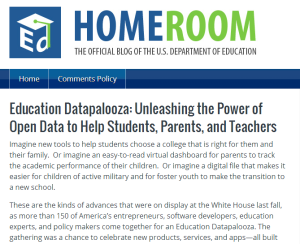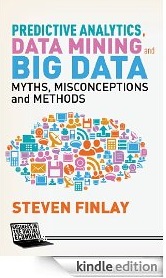 Jose Ferreira, the fast-talking sales rep-in-chief of Knewton, likes to dazzle with numbers. In a 2012 talk hosted by the US Department of Education, Ferreira rattles off the stats: So Knewton students today, we have about 125,000, 180,000 right now, by December it’ll be 650,000, early next year it’ll be in the millions, and next year it’ll be close to 10 million. And that’s just through our Pearson partnership. For each of these students, Knewton gathers millions of data points every day. That, brags Ferreira, is five orders of magnitude more data about you than Google has. … We literally have more data about our students than any company has about anybody else about anything, and it’s not even close. With just a touch of breathless exaggeration, Ferreira goes on: We literally know everything about what you know and how you learn best, everything.
Jose Ferreira, the fast-talking sales rep-in-chief of Knewton, likes to dazzle with numbers. In a 2012 talk hosted by the US Department of Education, Ferreira rattles off the stats: So Knewton students today, we have about 125,000, 180,000 right now, by December it’ll be 650,000, early next year it’ll be in the millions, and next year it’ll be close to 10 million. And that’s just through our Pearson partnership. For each of these students, Knewton gathers millions of data points every day. That, brags Ferreira, is five orders of magnitude more data about you than Google has. … We literally have more data about our students than any company has about anybody else about anything, and it’s not even close. With just a touch of breathless exaggeration, Ferreira goes on: We literally know everything about what you know and how you learn best, everything.
The data is mined to find correlations between learning outcomes and learning behaviours, and, once correlations have been established, learning programmes can be tailored to individual students. Ferreira explains: We take the combined data problem all hundred million to figure out exactly how to teach every concept to each kid. So the 100 million first shows up to learn the rules of exponents, great let’s go find a group of people who are psychometrically equivalent to that kid. They learn the same ways, they have the same learning style, they know the same stuff, because Knewton can figure out things like you learn math best in the morning between 8:40 and 9:13 am. You learn science best in 42 minute bite sizes the 44 minute mark you click right, you start missing questions you would normally get right.
The basic premise here is that the more data you have, the more accurately you can predict what will work best for any individual learner. But how accurate is it? In the absence of any decent, independent research (or, for that matter, any verifiable claims from Knewton), how should we respond to Ferreira’s contribution to the White House Education Datapalooza?
A  new book by Stephen Finlay, Predictive Analytics, Data Mining and Big Data (Palgrave Macmillan, 2014) suggests that predictive analytics are typically about 20 – 30% more accurate than humans attempting to make the same judgements. That’s pretty impressive and perhaps Knewton does better than that, but the key thing to remember is that, however much data Knewton is playing with, and however good their algorithms are, we are still talking about predictions and not certainties. If an adaptive system could predict with 90% accuracy (and the actual figure is typically much lower than that) what learning content and what learning approach would be effective for an individual learner, it would still mean that it was wrong 10% of the time. When this is scaled up to the numbers of students that use Knewton software, it means that millions of students are getting faulty recommendations. Beyond a certain point, further expansion of the data that is mined is unlikely to make any difference to the accuracy of predictions.
new book by Stephen Finlay, Predictive Analytics, Data Mining and Big Data (Palgrave Macmillan, 2014) suggests that predictive analytics are typically about 20 – 30% more accurate than humans attempting to make the same judgements. That’s pretty impressive and perhaps Knewton does better than that, but the key thing to remember is that, however much data Knewton is playing with, and however good their algorithms are, we are still talking about predictions and not certainties. If an adaptive system could predict with 90% accuracy (and the actual figure is typically much lower than that) what learning content and what learning approach would be effective for an individual learner, it would still mean that it was wrong 10% of the time. When this is scaled up to the numbers of students that use Knewton software, it means that millions of students are getting faulty recommendations. Beyond a certain point, further expansion of the data that is mined is unlikely to make any difference to the accuracy of predictions.
A further problem identified by Stephen Finlay is the tendency of people in predictive analytics to confuse correlation and causation. Certain students may have learnt maths best between 8.40 and 9.13, but it does not follow that they learnt it best because they studied at that time. If strong correlations do not involve causality, then actionable insights (such as individualised course design) can be no more than an informed gamble.
Knewton’s claim that they know how every student learns best is marketing hyperbole and should set alarm bells ringing. When it comes to language learning, we simply do not know how students learn (we do not have any generally accepted theory of second language acquisition), let alone how they learn best. More data won’t help our theories of learning! Ferreira’s claim that, with Knewton, every kid gets a perfectly optimized textbook, except it’s also video and other rich media dynamically generated in real time is equally preposterous, not least since the content of the textbook will be at least as significant as the way in which it is ‘optimized’. And, as we all know, textbooks have their faults.
Cui bono? Perhaps huge data and predictive analytics will benefit students; perhaps not. We will need to wait and find out. But Stephen Finlay reminds us that in gold rushes (and internet booms and the exciting world of Big Data) the people who sell the tools make a lot of money. Far more strike it rich selling picks and shovels to prospectors than do the prospectors. Likewise, there is a lot of money to be made selling Big Data solutions. Whether the buyer actually gets any benefit from them is not the primary concern of the sales people. (p.16/17) Which is, perhaps, one of the reasons that some sales people talk so fast.
